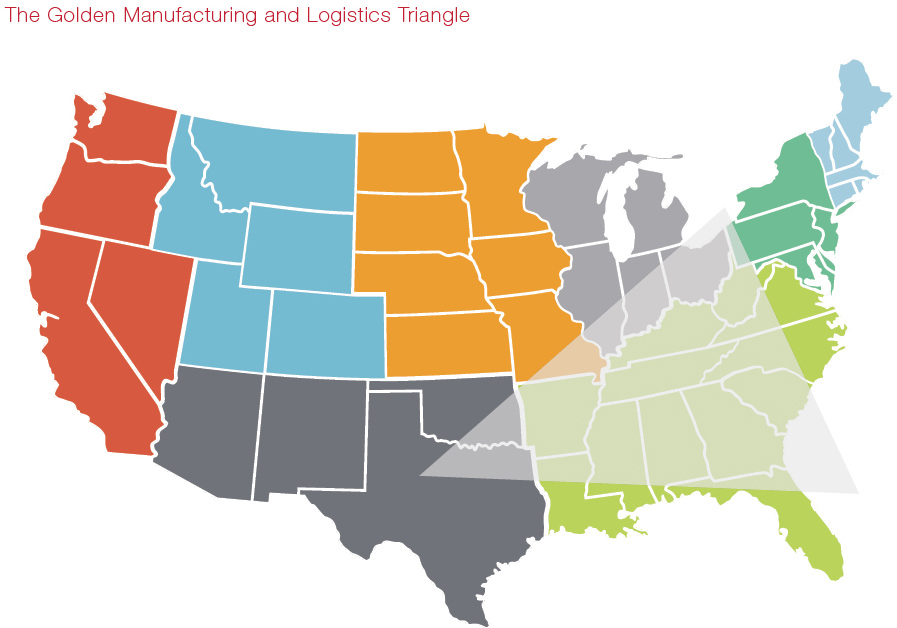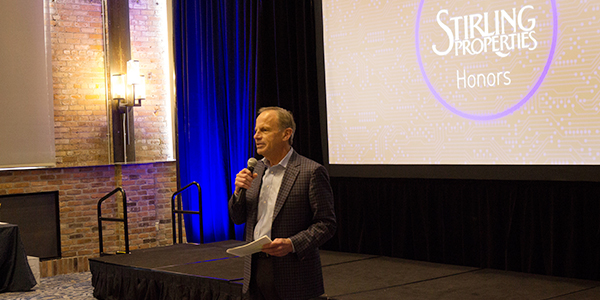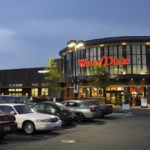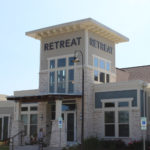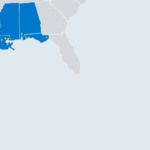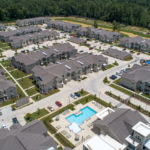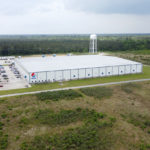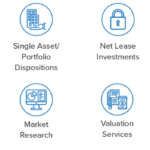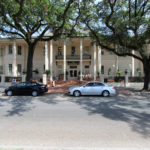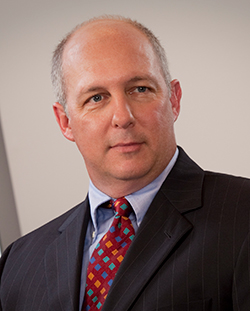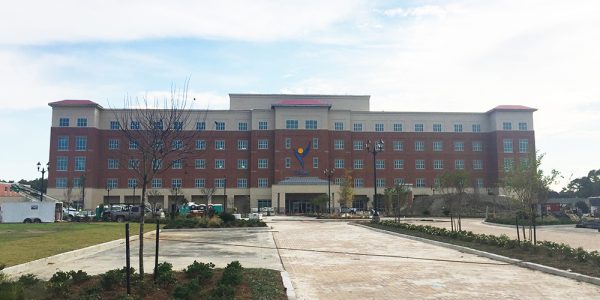Retail evolution driving industrial growth across the Gulf South
Here’s one more thing to blame on the millennials: (We) are spurring the evolution of retail into high-tech industrial distribution centers with the click of a finger.
It’s no secret that the retail industry is changing. The prolific growth of e-commerce and technological advancements are shifting consumer shopping behaviors, especially among the sizable millennial population. Anything and everything can be ordered online, and retailers are racing to deliver products to the customer in the fastest, most cost-efficient manner.
The industrial real estate sector is a direct beneficiary of this push to improve supply chains and get closer to customers. In the last eight years, Amazon has built nearly 100 million square feet of distribution centers across the country, with more than 90% of the U.S. now within range for next-day delivery.
Demand for industrial and warehouse space is continually increasing as goods need to be manufactured, stored, sorted, and distributed to meet the insatiable appetite of online consumers. However, today’s complex e-commerce operation requires more sophisticated industrial space than we have seen in the past. Building types and uses have shifted into more modern, technologically advanced facilities to serve as inventory and fulfillment centers. Some more extensive corporations require vast networks of warehouse space, all resulting in the tremendous potential for industrial assets.
This growth is undoubtedly influencing new development in the sector, but recovered assets are also playing a large part in the supply solution. According to a recent study by CBRE, more than 1 billion square feet of modern warehouse space has been constructed within the last decade, which only accounts for 11 percent of the total U.S. inventory of roughly 9.1 billion square feet. Nearly 1 billion square feet is more than 50 years old—consequently, a large portion of the supply is outdated and inadequate.
High-tech logistics and fulfillment facilities can be used for adaptive reuse of properties and help to backfill large blocks of retail space left vacant by big-box stores. Last fall, Stirling Properties facilitated the 1st to market standalone Walmart pickup location in the greater New Orleans area. The grocery concept renewed a shuttered bank building to include a roughly 4,000-square-foot, 2-story distribution facility. The recent closure announcements by Toys R Us, Kmart, and Winn-Dixie stores in our area could present further backfill opportunities for industrial real estate needs.
Another essential factor in the industrial market surge is location, although not necessarily in the prime market areas that you would expect. Centrally located facilities with proximity to various intermodal transportation options are key. Industrial markets here in the Gulf South are performing exceptionally well given the access to burgeoning port cities such as Mobile, New Orleans, and Natchez. Large corporations—like Amazon, Walmart, and FedEx—are starting to take notice of our region and utilizing our ports, air, and rail systems to transport goods. Surrounding infrastructure, warehouses, and properties are experiencing substantial demand.
E-commerce suppliers—including Amazon—and many other expanding companies are starting to focus their attention toward the southeast U.S., an area that has been widely overlooked in the past. This sweet spot, known as the “Golden Triangle,” is said to be currently producing one-half of the U.S. annual gross domestic product and is quickly becoming America’s new supply chain. Further, it’s estimated that 70% of the country’s population now lives east of the Ohio and Mississippi Rivers. Companies would be smart to consider expanding their operations and supply chains this way.
Aside from e-commerce, we also see massive growth in technology, auto, aerospace, manufacturing, and logistics companies in our region. Recent examples include significant development of Airbus and Austal in Mobile, AL; SSAB steel mill relocated its headquarters from Chicago to Mobile, AL; the arrival of a new Toyota manufacturing plant in Huntsville, AL; Continental Tire is constructing a tire manufacturing plant in Clinton, MS; and, of course, the recent expansion of DXC Technologies in New Orleans, LA—just to name a few. Earlier this year, Stirling Properties announced development opportunities for Bilten Park, a 6,031-acre site that has been designated as Louisiana’s #1 megasite for future advanced manufacturing and logistics.
The southeast, and more particular, the Gulf South is well positioned to support growth in the industrial and warehouse sector on all fronts. The value and demand for commercial property are not slowing down; tenants are still seeking space. As the rise of online retailing continues, we remain optimistic that the performance of industrial assets will continue well into the future. And as the millennial population continues to mature, (our) buying power will only increase, driving even more massive growth in e-commerce and industrial demand.
Commercial real estate professionals have a pivotal role to play in the new era of industrial real estate. But taking advantage of new and unique opportunities requires in-depth market knowledge, as well as sophisticated market research, and an understanding of current factors driving corporate site selection. We need to think outside of the box and offer creative solutions in today’s rapidly evolving real estate industry.
We are Evolving!
Stirling Properties celebrates 20th Annual Stirling Honors.
Stirling Properties celebrated its 20th Annual Stirling Honors last Friday at the beautiful NOPSI Hotel in New Orleans. The yearly event recognizes and distinguishes the successes of Team Stirling and the company over the past year. A Commercial Celebration was also held to honor the Commercial Brokerage Division and to grant Commercial Production Awards.
To kick off the morning, Dancing Grounds performed an outstanding tribute to New Orleans in honor of the city’s 300th Anniversary with African drums and a second line rendition. The overarching theme of the day was EVOLUTION. Much like the City of New Orleans, Stirling Properties—and the entire commercial real estate industry—has evolved over the years to keep pace with the changing landscape.
Stirling Properties’ President & CEO, Marty Mayer, served as the event emcee for the day and encouraged team members to think about how technology and industry advancements will continue to impact the company moving forward. “Our industry is changing, the way we communicate and position ourselves is changing, technology is changing… and as a result, the way we do business is evolving. It’s imperative that we are proactive and adaptable,” said Mayer.
He went on to say, “We don’t know exactly what the future holds, but we can be certain it will hold significant transformation. I challenge each of you to be creative and explore new and innovative opportunities. We will need fundamental change to get from where we are now to where we need to be—and it will take all of us working together as a team to get there.”
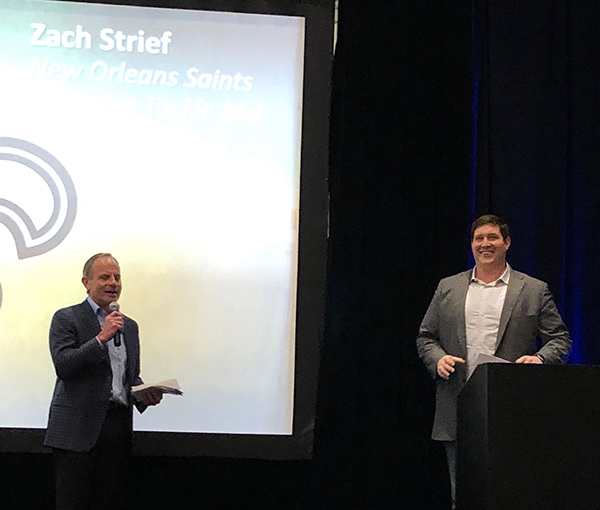
Zach Strief, Former New Orleans Saint
Former New Orleans Saint, Zach Strief, closed out the program with an inspirational message on the importance of supporting and giving back to our community. He shared his love for New Orleans and his passion for philanthropy through numerous local nonprofit organizations including Café Reconcile, Team Gleason, and Dream Big Foundation. At the end of his presentation, Stirling Properties presented Strief with a $5,000 donation in support of Team Gleason.
The Team Stirling awards ceremony was held in the afternoon. Jan Kinard, Roslyn Rogers, and Jeff Barnes were acknowledged as recipients of Stirling Properties’ most prestigious honor, the Exceeding Excellence Award, presented for extraordinary employee actions that exemplify the values necessary to further the success of the company. Exceeding Excellence Award recipients are nominated and selected by their co-workers. Commercial Division Award recipients received recognition for Bronze, Silver, Platinum, Diamond, and Ruby production levels based on individual adjusted gross commissions from 2017. Special acknowledgment was also given to Rhonda Sharkawy, Senior Retail Leasing and Development Executive in New Orleans, for achieving the Top Commercial Producer Award—this is the 4th consecutive year she has earned this accolade.
Thank you to everyone who joined us for a great day of inspiration, company insight, delicious food, and camaraderie!
COMMERCIAL DIVISION AWARDS
Ruby Award
Diamond Award
Platinum Award
Gold Award
Silver Award
Bronze Award
- DCIM100MEDIADJI_0608.JPG
Also recognized were employees and agents who achieved special anniversaries with the company. Service Awards were given for 5, 10, 15, 20, 25, and 35-year milestones.
SERVICE AWARDS
5 Years of Service: Mike Alexander – Lafayette, Karen Bachemin – Covington, Mac Bauer – New Orleans, Ryan Juneau – Baton Rouge, Samantha Marshall – Covington, Karen McElroy – Shreveport, Stacy Odom – Shreveport, Mel Sayler—Covington, Mike Seago – Gulfport, Denise Tatum – Baton Rouge, Kelly Vargas – Westpark, Kelly Wellmeyer – Covington, Robin Zemke – New Orleans
10 Years of Service: Seth Citron – Lafayette, Kayla Davis – Covington, Joe Gardner – New Orleans, Justin Landry – Covington, Reid Richardson – Covington, Gaines Seaman – New Orleans, Townsend Underhill – Covington
15 Years of Service: Will Barrois – Mobile, Mike McDougall – Covington, Cyndie Quave – Covington, Sonia Shoemaker – New Orleans, Ashlee White – Covington
20 Years of Service: Beth Cristina – New Orleans and Rhonda Sharkawy – New Orleans
25 Years of Service: Paul Mastio – Covington and Harold Staub – New Orleans
35 Years of Service: Grady Brame – Covington
Stirling Properties Names Darryl Bonner To Executive Team
Stirling Properties is pleased to announce that long-time real estate executive, Darryl Bonner, has joined its team as Vice President of Strategic Initiatives. He will work from the company’s Pensacola (FL) Office located in the SCI Building at 220 West Garden Street.
As VP of Strategic Initiatives, Bonner will assist Stirling Properties with short- and long-term strategic planning of the company’s expanding portfolio. He will also support new business growth across a variety of service areas including development, management, leasing, and acquisitions.
“We are thrilled to have Darryl join Team Stirling. He has been a leader in the commercial real estate industry for quite some time and brings a wealth of experience to our company,” said Marty Mayer, President & CEO of Stirling Properties. “In this rapidly evolving business environment, his extensive market knowledge and deep-set relationships throughout the Gulf South region will add significant value to our strategic growth plans.”
“I have always admired Stirling Properties and the skill set that this team brings to the Gulf South region—so it is with great pride and much excitement that I accept this unique role. I look forward to being a part of the company’s future success,” said Bonner.
Previously, Bonner was Senior Vice President of Retail for Cousins Properties in Atlanta, GA, where he was responsible for all retail leasing activity for the company—from specialty centers to mixed-use projects and office properties, including the procurement of key leases and tenants during pre-development activities in new projects. He has extensive experience working with national and regional retailers and leasing platforms.
Prior to that, Bonner held a range of retail leasing executive positions at General Growth Properties in Atlanta, GA; Jim Wilson & Associates in Montgomery, AL; and Robert B. Aikens & Associates in Troy, MI.
A Florida native, Bonner earned his bachelor’s degree from Southeastern Louisiana University in Hammond, LA, and his MBA from Auburn University in Montgomery, AL. He is a member of the International Council of Shopping Centers (ICSC) and holds the professional designations of Certified Shopping Center Manager (CSM), Certified Leasing Specialist (CLS), and Certified Retail Property Executive (CRX). He is a frequent guest speaker at Auburn University, ICSC conferences and industry roundtable discussions, and real estate educational programs.
Consumers Still ♥ Brick-and-Mortar
Valentine’s Day has come and gone—and it was retailers who were feeling the love this year. According to the National Retail Federation (NRF), early sales projections leading into the holiday were estimated to reach a near record of $19.6 billion, an increase from $18.2 billion last year. U.S. consumers individually were expected to spend an average of $144 on Valentine’s Day, also up from last year’s $136.57. The NRF reports these retail numbers are the second-highest in its survey’s 15-year history. Additionally, the majority of Valentine’s Day retail sales were expected to be made in a physical store, including department stores, discount stores, specialty stores, florists, or local small businesses.
This healthy holiday spending is reflective of the upwards trend across the U.S. over the past year. The 2017 official Holiday Season (November & December) rounded out with total retail sales estimated to be more than $690 billion, a whopping 5.5% aggregate increase over 2016, indicating the strongest holiday season growth rates since 2010. Shoppers spent an average of $842 on gifts and holiday-related items versus $714 in 2016. Furthermore, 85% of total sales were by retailers with a physical presence.
These statistics confirm and reiterate that the retail real estate industry is thriving, and the rise of ecommerce hasn’t changed that. Yes, we’ve read the bloated headlines about “the retail apocalypse,” “the death of shopping centers,” and “the Amazon effect on retail” but the real story is that ecommerce sales account for less than 12% of total retail sales. It is also estimated that over half of those online sales actually go to brick-and-mortar retailers. Even though ecommerce sales are growing considerably, online giants such as Amazon still only account for a small percentage of the overall market.
As we saw this past Valentine’s Day and during the 2017 Holiday Season, consumers prefer to shop in-store. In fact, 90% of holiday shoppers made purchases from retailers with a physical presence. In the retail game, successful stores are actually using ecommerce to their benefit, giving consumers more options and convenience to make their purchases. Omnichannel buying options, like click-and-collect and click-and-ship, are enhancing the brick-and-mortar shopping experience and boosting sales at physical stores.
To add even more sentiment to your post-Valentine’s Day heart: In the past year, we saw more retail store openings than closures and store openings are expected to outpace closures over the next 5 years (according to Zebra Technologies-IHL Group study). In 2017, the retail market had 4,080 net store openings.
And… To put the icing on the heart-shaped cupcake, retail sales are expected to continue to increase for the next several years. Many experts forecast that overall retail sales will rise between 3.8% and 4.4% in 2018 over last year. That certainly warms my heart.
On track with the rest of county, the retail landscape here in the Gulf South region is solid. Occupancy rates in our centers remain high. Retailers are reporting strong foot traffic and higher-than-anticipated sales numbers—especially those who are learning to adapt to consumer demands and offering unique shopping experiences. We are also attracting and welcoming many new-to-market stores and restaurants.
So, on Valentine’s Day, today, and every day, let’s remember to advocate for and show a little love to our brick-and-mortar retail friends.
Marty Mayer
President & CEO
Stirling Properties Acquires $59.7M Rehab Hospital In Joint Venture With Ochsner
Stirling Properties, in a joint venture partnership with Ochsner Clinic Foundation, has closed on the acquisition of the new Ochsner rehabilitation hospital located at 2614 Jefferson Highway in Jefferson, Louisiana.
This new addition to Ochsner’s Main Campus West is a five-story, 129,875-square-foot medical building. It will house three separate high-demand healthcare components, including Long Term Acute Care, Inpatient Rehabilitation, and a Skilled Nursing Facility. Ochsner will be the primary operator in the new building, along with Select Medical and LHC Group.
Construction started on the development in early 2017, and building and site work is now complete. The facility plans to open by the 2nd quarter of 2018.
The total project cost was $59,775,000. IBERIABANK provided the debt financing.
This acquisition further solidifies Stirling Properties’ commitment to growth in the Gulf South region and our diversification into the healthcare real estate sector. We have recently partnered with some of our region’s top medical providers on a diverse range of projects.
Our company’s ability to provide a full continuum of services, including development & redevelopment, commercial brokerage, acquisition & investment, and asset management services uniquely positions us in the rapidly expanding healthcare industry. We will continue to grow our portfolio and garner a wealth of experience with a wide array of healthcare properties, designs, and uses.
To learn more about Stirling Properties’ Healthcare Real Estate Portfolio, click here or visit stirlingprop.com.
Hurricane Preparation and Emergency Planning Part I
Along the Gulf South, we are nearly three months into Hurricane Season, and approaching the more active time of the year. Unfortunately, it’s not a matter of “if,” but “when” a disaster will strike—so it’s critical that businesses prepare for emergencies before they occur. Every company should have a process in place to make sure that you, your employees, and clients are prepared in case of an emergency. However, research shows that more than 57% of real estate companies lack business continuity and an effective disaster plan. We tapped our Stirling Properties’ expert, Patrick Malik, Vice President of Property & Risk Management for his guidance on Hurricane Preparation and Emergency Planning. Below are a few tips for advance emergency planning concepts.
Part I: Advance Emergency Planning
Businesses in hurricane prone environments have the opportunity to “get ready” each year. This is a tremendous responsibility considering the advancement of technology, evolving business functions, and the need for planners to anticipate hurricane impact scenarios and its effect on their business.
Before starting the emergency planning process, serious thought should be applied to the following concepts as advance preparation:
- Income Stream
- Chief Job Functions
- Coordination with IT to plan data and connectivity preservation
- Insurance
- Critical Company Responsibilities
Your income stream, how it is derived and how it is processed, is essential to preparing cash reserves and insuring against the loss of revenue. Real estate service companies have difficulty insuring their transactional income but can rely on recurring monthly property management income to help bridge times when transactional income pauses due to a disaster.
The principal job functions necessary for assuring your income stream, getting employees back to work safely, and establishing your business continuity need to be identified ahead of time. Also, attention to supporting your employees with their personal emergency plans and specific needs after a hurricane is instrumental to your company’s recovery. Likewise, getting individuals back to work with temporary offices, if necessary, is important to consider in establishing job function and returning to normality.
Continuing advances in IT infrastructure and your company’s dependence on its availability are ever increasing. Bandwidth has become irreplaceable, and security defense of your network sometimes limits your outside access. Data storage, redundancy, and consistent access to email are critical matters to preserve job performance. The technology and IT infrastructure that supports these vital job functions must be resilient and available for employees to resume work.
Insurance is not a popular subject, but it is necessary when unfortunate and traumatic events occur. Many people are ill-equipped or simply don’t want to deal with these situations. Understanding your insurance and knowing that your coverage is adequate to assure your business continuity is very important. Small- and mid-size companies can seldom afford a risk manager on staff and depend greatly on their insurance agent for advice and guidance. The resulting coverage is based on how well your insurance agent knows your company—its income stream, critical job functions, IT infrastructure, and risks. This is a lot of information that someone outside of your company needs to understand and accurately quantify, and it is your responsibility to provide the necessary details.
Have you ever practiced the application of your insurance? As something potentially vital to the survival of your company, why not? Desktop exercises and what-if scenarios with key personnel can help to identify potential issues and questions to discuss with your insurance agent and proactively address with your emergency plan. These training exercises can significantly enhance company resilience and assure accurate insurance coverage, thus building confidence in your business continuity efforts.
Identifying your most critical company responsibilities advances the first four concepts above to a coordinated plan that combines efforts to mitigate exposure, minimize impact, reduce damages, and insure for losses. We all know how expensive insurance is, and the impact of losses intensifies that expense over time. Having the knowledge and taking the appropriate steps in advance will assure that your emergency plan is in sync with your insurance coverage and your responsibilities to make sure your business doesn’t miss a beat.
These advanced planning concepts extend beyond hurricane planning and support the need to evolve your hurricane emergency planning to become a comprehensive emergency plan that tackles all threats to your business and employees.
For a more in-depth look at Hurricane Preparation and Emergency Planning, read Part II: The Hurricane Emergency Plan.


